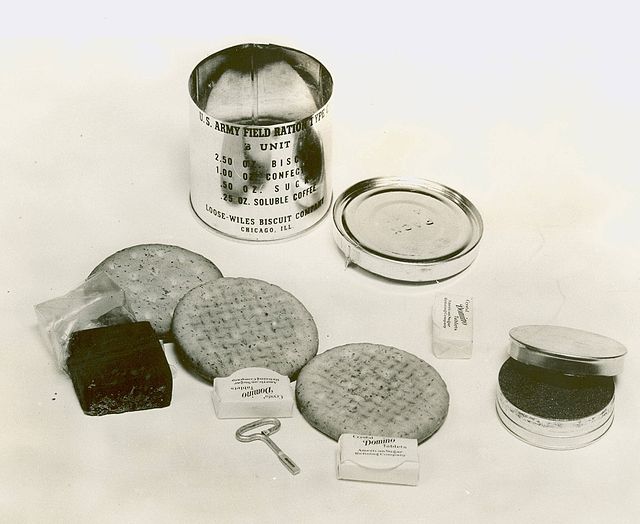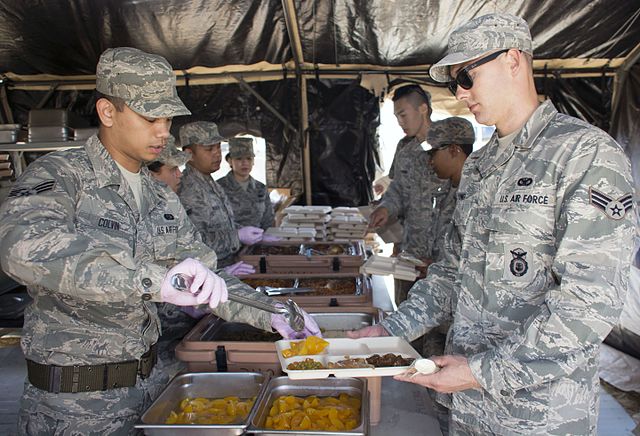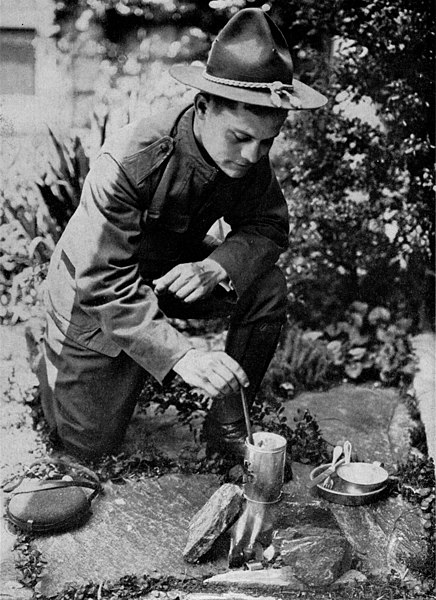The C-ration was a United States military ration consisting of prepared, canned wet foods. They were intended to be served when fresh or packaged unprepared food was unavailable, and survival rations were insufficient. It was replaced by the similar Meal, Combat, Individual (MCI) in 1958; its modern successor is the Meal, Ready-to-Eat (MRE).
A selection of United States military C-ration cans from World War II with items displayed. Note that the Old Gold cigarettes and vanilla caramels were not part of the C-ration.
An opened 1941 B unit with contents: cellophane wrapped chocolate fudge, three biscuits, three pressed sugar cubes, and a small tin of soluble coffee
United States military ration
United States military ration refers to the military rations provided to sustain United States Armed Forces service members, including field rations and garrison rations, and the military nutrition research conducted in relation to military food. U.S. military rations are often made for quick distribution, preparation, and eating in the field and tend to have long storage times in adverse conditions due to being thickly packaged or shelf-stable.
U.S. Air Force airmen serving Unitized Group Rations prepared in a single palletized expeditionary kitchen
An American soldier boiling his rations using rolls of silk to create a cooking fire without smoke, 1917
U.S. Army soldiers eating C-rations during the Italian campaign of World War II, 1943
A U.S. Marine eating an MRE, 2005. This Marine is taking part in "The Crucible" training course, part of which has trainees ration their MREs over a three-day period.






